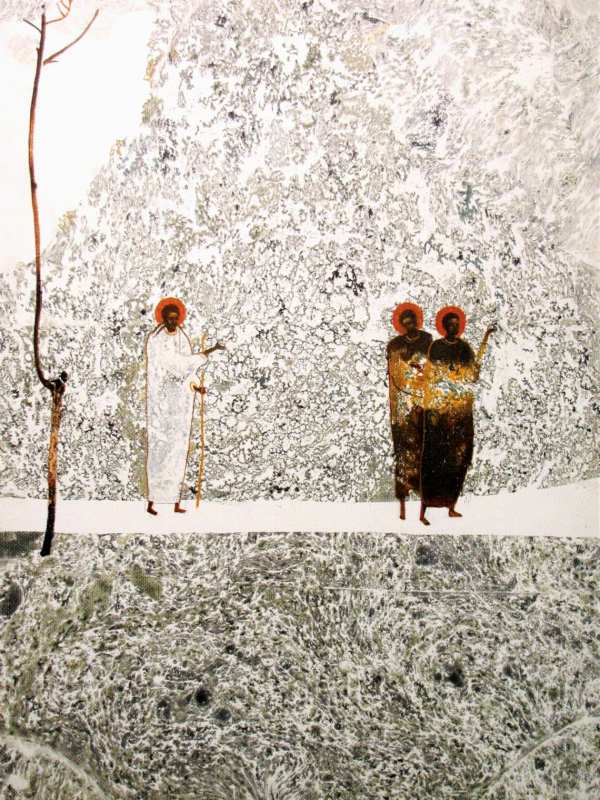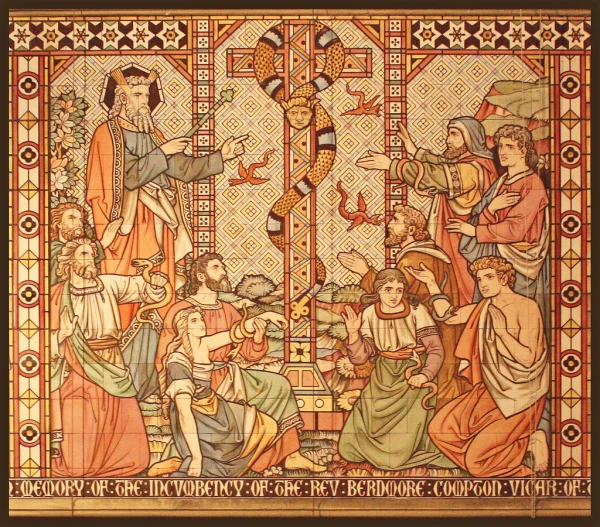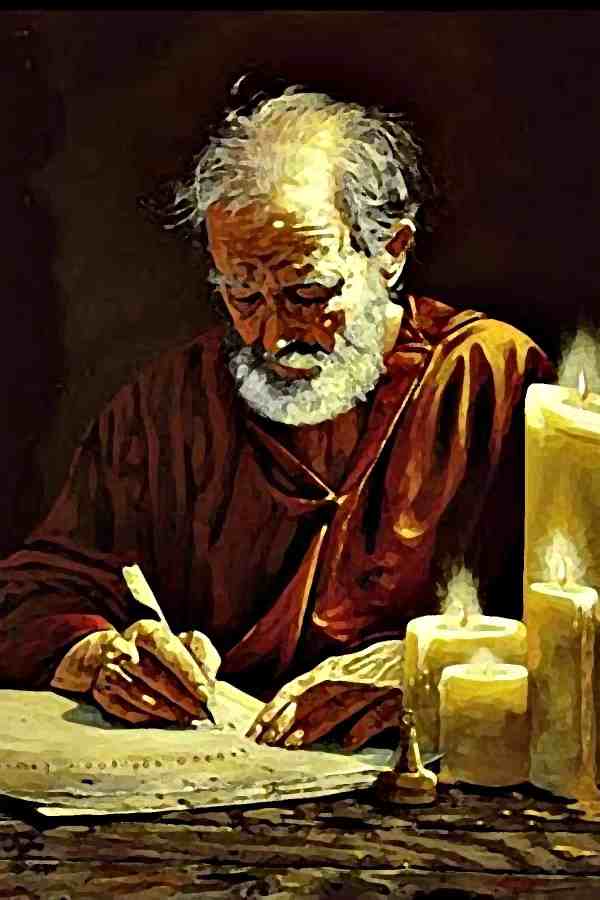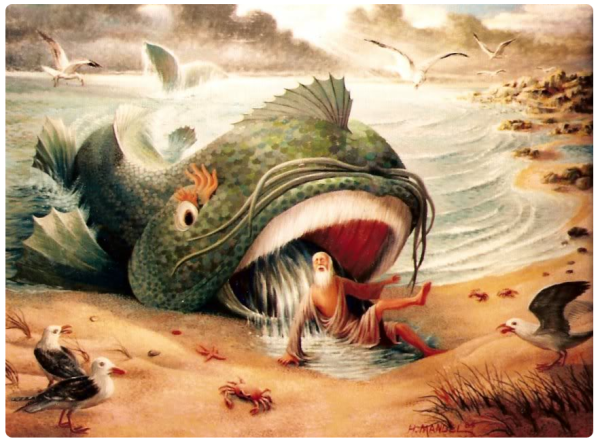Image: Ivanka Demchuk, The Road to Emmaus
I noted on Easter Day that the Resurrection (capital R) is an event – at least for the modern secular mind that lacks credible evidence. From the faith perspective, Christians have a variety of viewpoints and positions on the Resurrection of Jesus as the Christ. Still, despite hotly contended differences at the end of the day our response to the question of evidence is simply to appeal to mystery. Mystery is no longer mystery if it can be explained – toyed with in the mind – accepted or rejected according to the evidence. That’s not how mystery works. Mystery is the protection of awareness not susceptible to rational explanation.
The Resurrection of Jesus is a divine action within the timeline of human history. As 21st-century Christians we are living through the unfolding of that timeline – bookended between the Resurrection of Jesus and the resurrection or restoration of all of creation. We need to know only two things about the Resurrection of Jesus.
The first is that the Resurrection does not happen to Jesus alone. The Western artistic tradition portraying Jesus triumphantly emerging from the tomb like a superhero is incomplete and misleading because it presents the Resurrection as a Jesus-only event. The Eastern Orthodox artistic tradition depicts Jesus emerging from the tomb with arms extended clasping the hands of Adam and Eve – physically pulling them from their tombs as he rises. The message here is that the Resurrection is a creation-wide event – a restoration not only of Jesus himself but of all of humanity at the head of creation. Another way to put this is that the Resurrection ushers in a new chapter in God’s involvement within the timeline of world history – a renewed invitation for the collaboration between human agency and the divine purpose.
The second thing we need to know is that our awareness of resurrection is a gut experience. We have several traditional sayings – I feel it in my bones, I sense it in my water, I know it in my bowels – to attest to somatic perceptions of a truth – body-centered – rather than intellectual – of the mind, or emotional – of the heart. As Sam Wells, Vicar of our illustrious namesake church – St Martin in the Fields at the eastern end of London’s Trafalgar Square puts it: Resurrection is a breathtaking mystery. It’s also the epicenter of the Christian faith. It’s something to be discovered believed and lived. It’s an idle tale if it simply remains a technical event – if it’s real, it’s a cosmic transformation. He continues: It’s not something to agree with in your head – it’s not even something to believe in your heart – it’s something to know in your gut.
Mark is the gospel appointed to be read in 2024. This poses a problem for the Sundays after Easter because Mark abruptly ends his gospel with the disciples standing frightened and perplexed at the empty tomb. Mark records neither resurrection nor post-resurrection appearances.
The empty tomb is an image we used for the Easter Day bulletin cover. During the Easter Season, we will continue to play on the image of the entrance stone to the tomb – rolled away to reveal the emptiness within. Roll away the stone, Lord – we ask – from all that impedes the collaboration of human agency with the divine purpose.
Because Mark provides neither resurrection nor post-resurrection encounters between Jesus and his followers – on the Sundays following Easter we need to rely on Luke and John’s accounts of the days following Jesus’ Resurrection event. In his final 24th chapter, Luke gives us two post-resurrection accounts. Earlier in the chapter we have the arresting story of the two disciples encountering Jesus on the road to Emmaus – a village about 5 miles outside Jerusalem. Today we have the second account of Jesus appearing to the gathered disciples. Both are accounts of resurrection as intuitive gut awareness.
Luke and John present the post-resurrection Jesus in a transformed body no longer limited by material obstacles. He appears and then disappears, having passed through walls and locked doors. Yet, Luke records that Jesus still eats – whether he needs to or not is not gone into. But he eats to communicate physicality – bodily-ness. But it’s the marks of his crucifixion wounds that become the key identifier between Jesus’ human and post-resurrection bodies.
We might imagine that the post-resurrection Jesus has a body completely healed from the wounds of his crucifixion. If Luke was making this story up would he not have emphasized the glorious perfection of Jesus’ post-resurrection body? Instead, he is at pains to record that the wounds are still visible in an otherwise changed body. There is a raw gutsiness to this image – an intimate physicality.
The two post-resurrection stories in Luke must be read as consecutive incidents in the same story. The two disciples who had journeyed to Emmaus have just returned to the group – literally out of breath – such was their haste – with a report of an encounter on the Emmaus road. They pour out their story of an encounter with a stranger – who before they recognized him as Jesus – nevertheless made their hearts burn hot within them.
The Ukrainian artist Ivanka Demchuk in her work The Road to Emmaus – influenced by the techniques and aesthetics of iconography depicts Christ robed in white facing the two disciples in black. Demchuk has layered gold leaf flecked with white covering the disciples’ midsection – drawing the eye immediately to the torso region.
The two disciples returning from the Emmaus Road encounter were not attempting to be anatomically correct in describing experiencing hearts on fire. They were trying to articulate effects intuited in the gut. Before they cognitively recognized Jesus, they felt him. Intuiting him resonating deep in their gut they later exclaim: were our hearts not burning in us as he spoke to us? Demchuk’s depiction also depicts a possibility that they might as easily have cried out: did not our guts roil – our stomachs lurch within us?
The gut is the seat of intuition. Intuition is knowing something without knowing how we know it. It’s knowing before the clarification of thinking. It’s knowing before the emergence of feeling. It’s perception beyond verification through the five senses. Knowing – as the intuition of the gut – is the realization of something intangible influencing and changing everything.
Resurrection remains a mystery to the rational mind. We can’t directly comprehend the Resurrection, yet like the 90.5% of dark matter and dark energy comprising the universe we know it’s there through observing its effects on the 0.5 percent of the universe we can see.
And like the effects of dark energy, dark matter on the visible universe Jesus’ Resurrection is known through its effects registered in the intuition of unstoppable change which the Prayer Book poetically refers to as the raising up of things cast down and the continual renewal of things grown old – because as Theresa of Avila reminds us – Christ has no body but ours. …. no body now on earth but ours.
The Resurrection’s effects are felt in the gut where the collaboration between human agency and divine purpose is furthered by the choices we make, the actions we take, even the mistakes we make. Our human agency has the potential to align with and further the divine purpose for the creation through the stories we construct to tell ourselves about the world, and how these stories influence the way we are to live in it.








